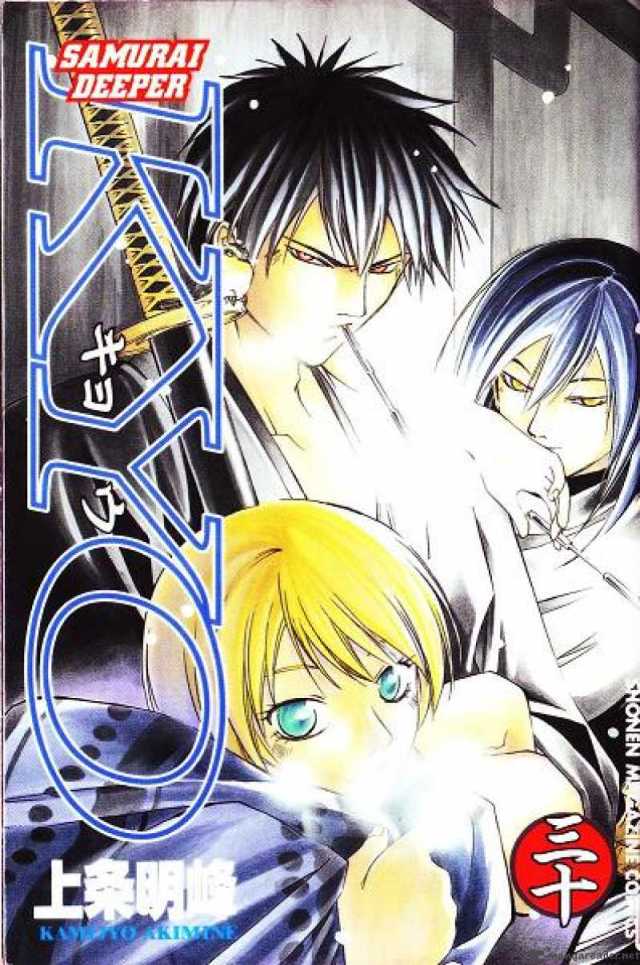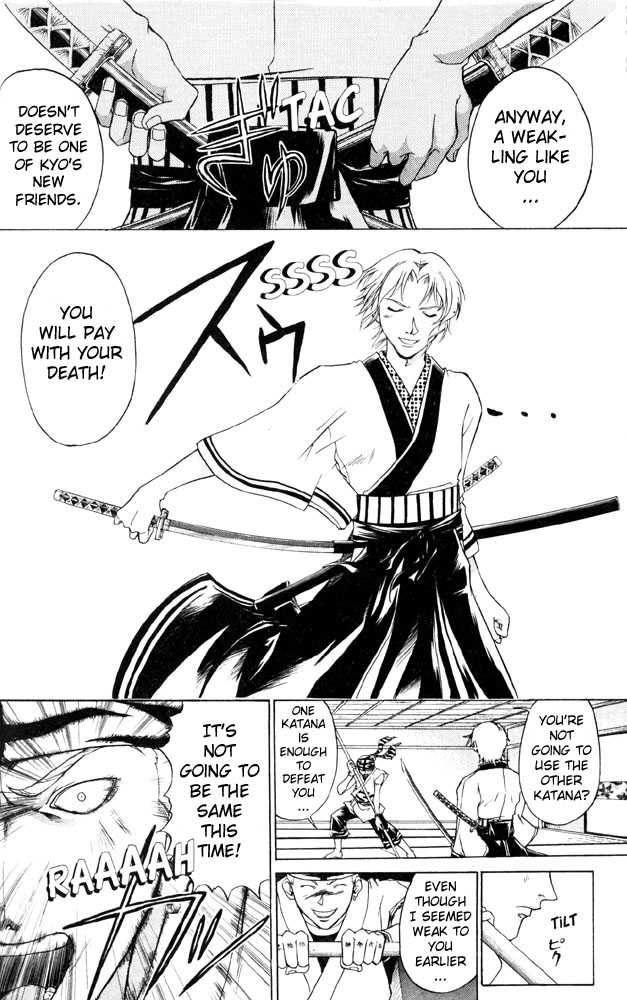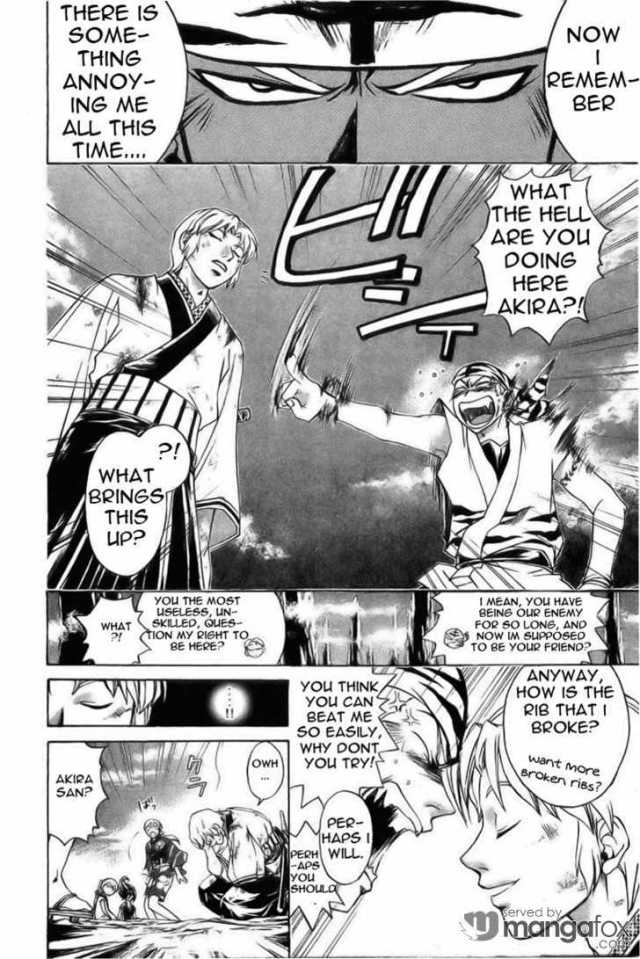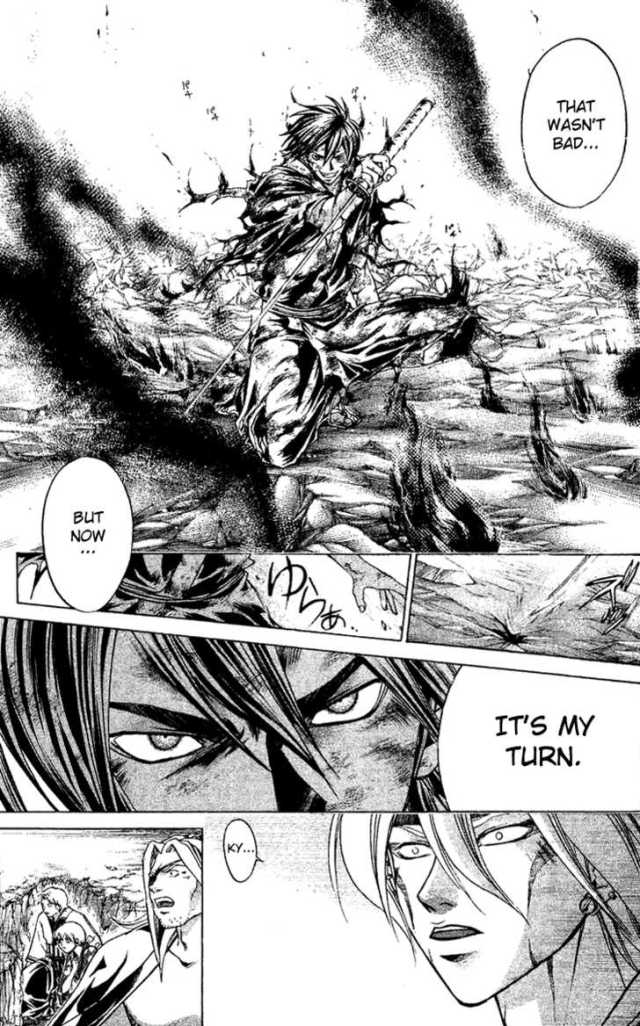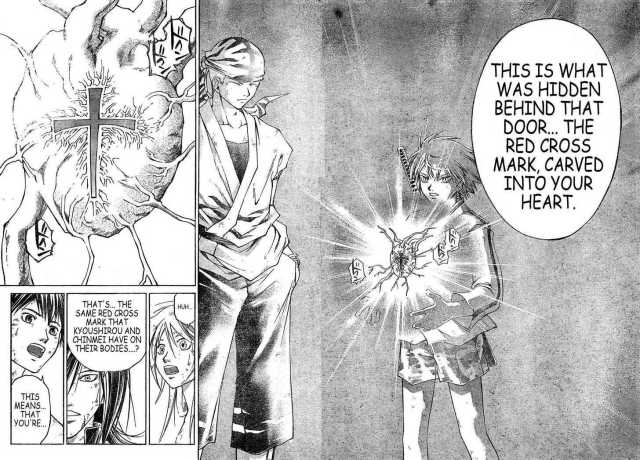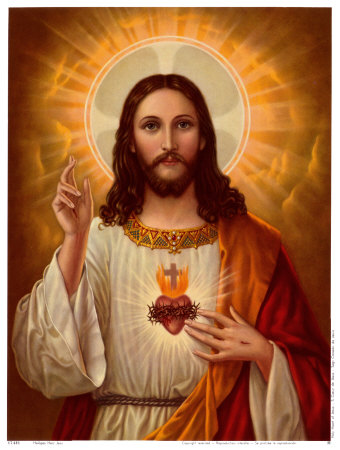The extent to which the Samurai Deeeper Kyo manga has captivated me is well known to my dear readers from my last article on the subject. I must say that no manga ending in recent memory has quite satisfied me as much for all the time and effort that went into reading it–I’ll likely take up this 308 chapter manga again! Unlike so many series, one can see that the author had a clear ending in mind. This prevented the series from wandering due to a lack of focus prevalent in so many manga. (One Piece, Bleach, Naruto, I’m pointing at you!) The ending in particular, for all its catering to the fans, possessed many interesting themes running through it: so much so, that I doubt having completely understood it.
Anyway, let me begin my only slighly spoilerific discussion of the manga–with the exception of the last paragraph, anyway, which contains the biggest spoiler in the work. One of the most interesting facets of the manga is the clever use of Christian imagery–the cross in particular. The use of such symbols tends to make the Christian otaku/anime junkie (whichever you prefer) a little nervous considering the Japanese inclination to scatter random Christian symbols throughout their works. However, one perceives a purpose to the use of this symbol throughout SDK. The fanservice and downright roguish characters rather obscure this, but one see how the themes of love, self-sacrifice, and suffering out of love run through this manga–more so as one approaches the end. (This is not apparent in the anime and must be considered the reason for its lackluster performance.) I almost wish to label Demon Eyes Kyo a Christ figure, but his lack of decency causes me to hesitate–someone else may make the connection if they like. Interestingly, this manga is one of those which refuses to paint black black or white white: one must carefully consider the person or matter at hand before labeling anything.
The ways Kyo approximates Christ lies in his strong loyalty toward his “servants.” Kyo himself tends to take up the lion’s share of combat unless one of his friends absolutely insists or he finds himself too weak for fighting. At which point, he refuses to lend his companion a helping hand–no matter how poorly the fight turns out for that guy. In order to refer this quality to Christ, let us remind ourselves that, although we cannot do anything without God’s grace, He sometimes wishes us to triumph in situations where He appears absent and in agonies which require all our effort–though, it is not really we who conquer, but Christ in us. This affords an opportunity for growth–if Christ pulled us out of all our difficulties by overwhelming force, we could neither develop the virtues of fortitude, faith, hope, and love, nor nor understand how weak we are in ourselves.
Then, one is struck by how much mercy and compassion the protagonists show toward their fallen foes: by the end, only one enemy, who appears to lack any kind of empathy or compassion, is willfully killed–nevermind, one other person of a similar caste met the same fate. Often, our heroes will mourn over the deaths of certain foes or convert their foes into allies in their quest to bring down the infamous Mibu clan–thus, showing the triumph of charity and a good-will.
The main villain, the Aka no Ou or Crimson King, is deluded rather than truly evil. He wishes to create a paradise free from suffering through the means of a violent conflict. But suffering, at least in the current version of reality, is inseparable from love. On the more humanist side, Schopenhauer claimed that compassion derives from us suffering and therefore being able to understand the sufferings of others. And indeed, people who have kept themselves from suffering are often those least able to empathize with others. Our Lord, the Man of Sorrows, revealed the fullness of his love during His Sacred Passion. We even see an essential transformation in Kyo: as the manga progresses and Kyo suffers more with the other characters, his love increases toward them, and he risks himself more for them.
But, the very end contains a striking symbol of love (the whopping spoiler to which I refer): the treasure which the Mibu had been closely guarding was the Crimson King’s heart, which he had removed from his body. Kyo’s final victory over the Crimson King convinced the king to place his heart back in his chest. Not only is his treasure a heart, but it has a cross engraved upon it. This displays the truth that some things cannot be understood save through the heart, especially a heart that has suffered. So, the Crimson King is persuaded to abandon his idea of a painless Utopia, since a Utopia as he envisions would be a loveless place–perhaps, even because people would not be able to suffer. And the cross upon the Crimson King’s heart cannot but recall the Sorrowful and Sacred Heart of Jesus, which comprehends all things.
So, do you know of any Christ figure in anime or any anime which uses Christian figures well, my dear readers?
